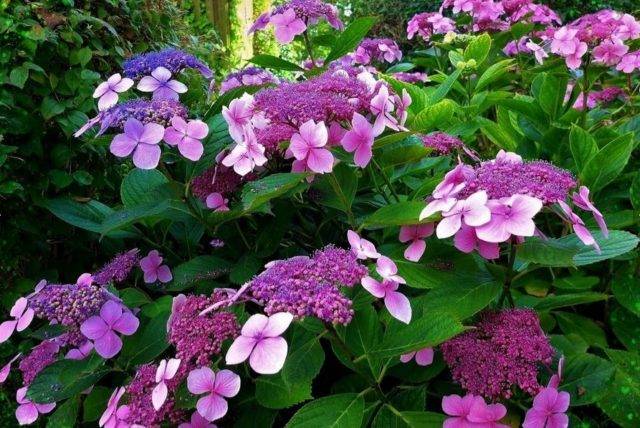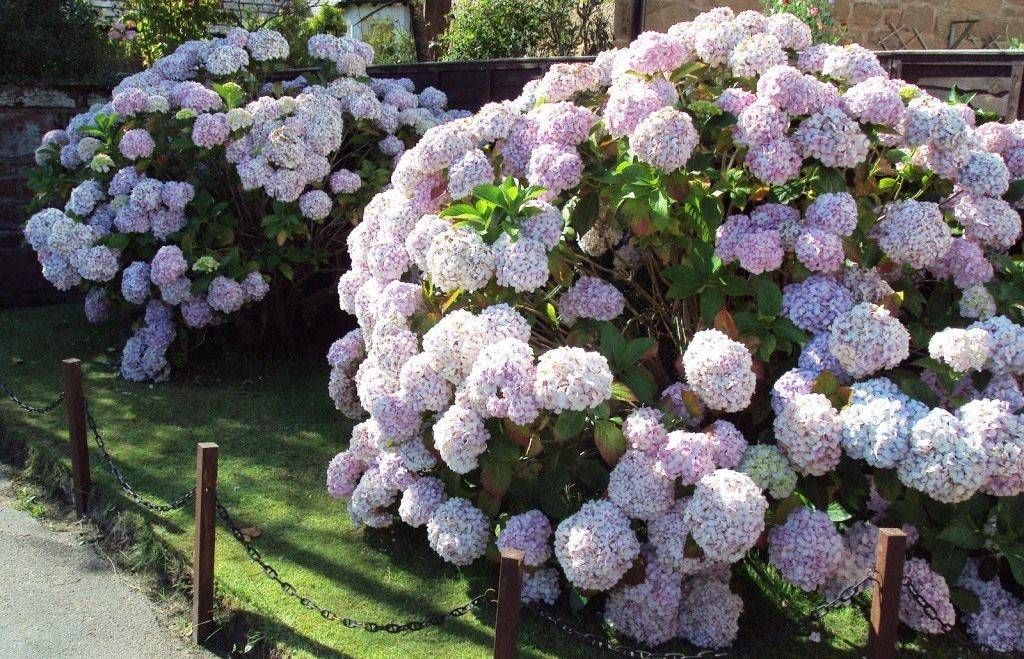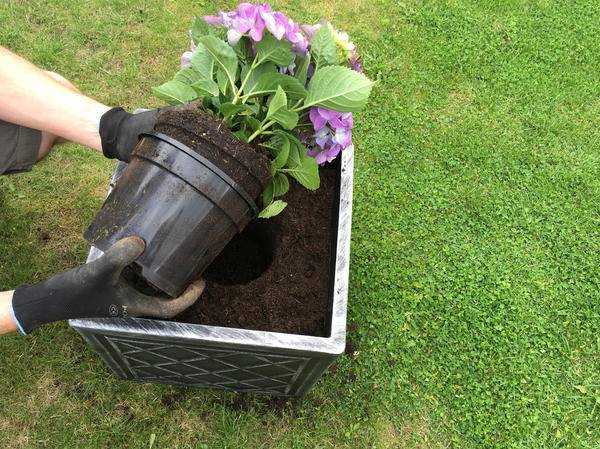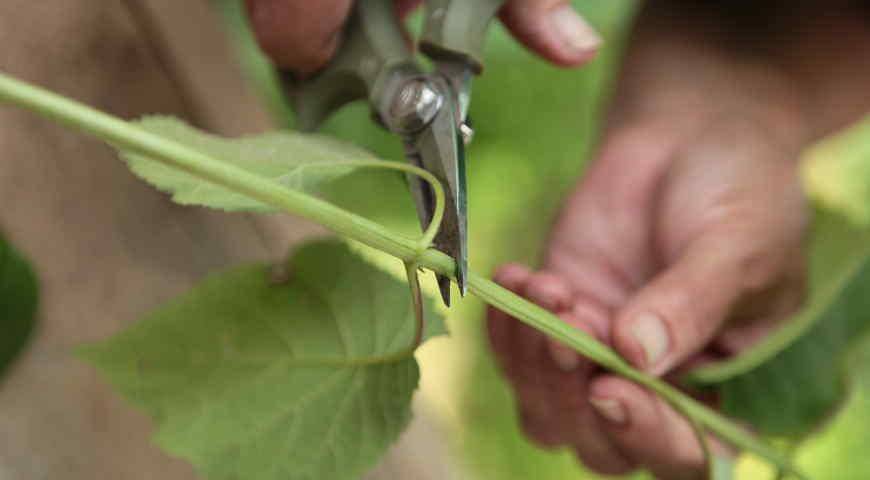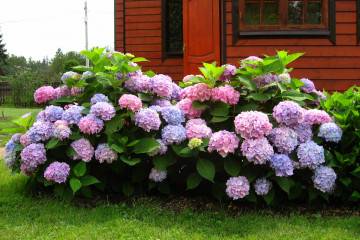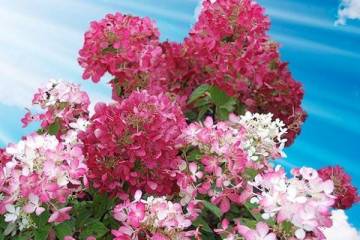Hydrangea rough or rough - planting and care in the open field
Content:
Rough hydrangea is a popular shrub that is often used in landscaping. The culture is distinguished by its unpretentiousness and resistance to frost. Its indisputable advantage is the long flowering period, which lasts several months.
Description of rough hydrangea
Rough hydrangea has a number of advantages, which is why many gardeners choose it.
Origin
The plant first appeared in Japan. After a while, it spread to other regions. The plant got to Europe in 1820. Today there are several varieties of rough hydrangea, each of which has certain characteristics.
Features of the
The following features appear in the description of the culture:
- rather thick shoots are characteristic of the bushes;
- inflorescences are large and flat. They can be white or purple;
- the leaves are large and attractive. Young foliage has a dark green color and a velvety texture. At the end of summer, it takes on a brown-orange hue;
- the bushes reach 1.5-2.5 m in height. The width is 1.2 m;
- hydrangea is characterized by excellent winter hardiness;
- bloom lasts from August to September.
Pros and cons
Culture has certain advantages and disadvantages. The main advantages of the plant include the following:
- the ability to use in landscape design;
- double structure of flowers;
- lush bloom;
- the possibility of reproduction in different ways.
Winter hardiness
The plant is considered to be quite frost-resistant. It can be grown in areas with different climates. However, with the arrival of winter, the shrubs need to provide quality protection from cold and wind.
Rough hydrangea varieties
The plant has several varieties. Each of them has certain characteristics. In order for a crop to be successful, they must be taken into account.
Sargent
Hydrangea Sargentiana has become very popular. It is characterized by velvety leaves. In a blossoming bud, the petals are separate from each other. The main advantage of the plant is the combination of several shades of petals. They can be purple, pale pink, pale blue.
Sometimes there are small white spots on the petals. The bushes are impressive in size, up to 4 m. Planting and caring for the Sargent hydrangea requires compliance with certain conditions.
Hot Chocolate
This is a relatively new variety with sterile flowers.The name of the hydrangea Hot Chocolite (Hot Chocolate) translates as "hot chocolate". It is characterized by combined flowers. In the center they have a purple color, along the edges are soft pink. The plant has large inflorescences up to 30 cm in diameter.
Macrophylla
The rough Macrophylla hydrangea (Hydrangea Macrophylla) can grow up to 1 m in height. It has beautiful leaves 30 cm long. Their surface is covered with a small light fluff. For hydrangea varieties Macrophylla, purple inflorescences 15 cm in size are characteristic. Flowering lasts from June to September.
Landing in open ground
For the cultivation of a crop to be successful, it is important to carry out planting work correctly.
Site and soil selection and preparation
The plant needs a warm area that is protected from strong winds. It is best to plant the bush in the shade or partial shade. The soil should be nutritious and slightly acidified.
Next to which plants it is better to plant
Hydrangea Aspera coexists well with almost all plants. The culture is often planted under bonsai or bushes. In the same area with hydrangea, you can plant hybrid irises, cotoneaster, lilacs. Neighborhood with perennial grasses and junipers is also permissible.
How to plant
First you need to prepare 50 cm landing pits, place 15 cm crushed stone on the bottom, which will play the role of drainage. Then it is necessary to add nutritious soil into the depression.
The bush must be placed in a recess and spread the roots, then sprinkle with earth and tamp, pour abundantly with water.
Plant care
To grow a plant to bring good results, you need to properly care for it.
Watering
The plant needs sufficient moisture. Fluid deficiency negatively affects the development of the bush. Therefore, 3-5 buckets of water are poured under the plant.
Fertilization and feeding
In the first 2 years, the plant does not need to be fed. Then, with the arrival of spring, you need to add mineral funds. During the formation of buds, superphosphate or mullein solution is used.
Mulching and loosening
The trunk circle should be loosened at least 2 times during the season. This must be done very carefully so as not to damage the roots. After loosening, the soil is covered with a mulch layer.
Pruning
For 2 years, the bushes do not require pruning. Then you need to cut them before the start of sap flow. In this case, it is necessary to remove broken and diseased branches.
Preparing for winter
At the end of September, the bushes should be prepared for winter. After flowering is complete, add organic matter. Then tie the bush and gently bend it to the ground. Cover the top with agrofibre and spruce branches.
Reproduction
Hydrangea can be propagated by different methods - seeds, cuttings, dividing the bush.
Growing from seeds
Planting material should be collected in the fall. It is necessary to plant seeds in the ground in March, deepening by 1 cm.
Cuttings
Cuttings need to be harvested in the spring. Shoots with 2 buds are suitable for this. They need to be soaked for 2 hours in a solution of root, and then planted in a composition of peat and humus.
Dividing the bush
In this case, it is recommended to dig up the bush and carefully divide it into parts, which are planted in prepared pits and periodically fed with complex means.
Layers
To implement this method, you need to bend strong hydrangea branches to the ground, make an incision on them and fix them. Sprinkle with earth and water. When young branches appear, you can transplant the bush to a permanent place.
Diseases and pests
The culture has excellent immunity, but sometimes it suffers from chlorosis or powdery mildew. In the first case, you should use ferrous sulfate, in the second, treat the bushes with foundation.
The use of rough hydrangeas in landscape design
The plant is often used in landscape design. It can be used alone or in combination with large leaf crops. Often, garden paths are made out with the help of a flower.
Rough hydrangea is a popular plant that is often used to decorate the site. In order for the culture to fully develop, it needs timely watering, feeding, pruning.
